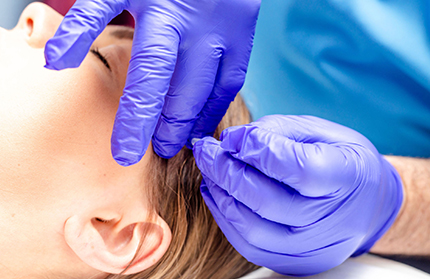Urinary incontinence is a highly common and often life-altering condition for
millions of Americans. It affects people of all ages, both male and female. Many assume that frequent bladder leakage or lack of control is simply something they must learn to live with, and may choose to manage the problem with diapers, medications or surgery. There is, however, an easier and more effective solution: physical therapy.
Physical therapy addresses the root causes of urinary continence, rather than simply treating the symptoms. Lack of bladder control actually stems from a lack of control over the muscles underneath the bladder. These muscles, located in the pelvic floor, form a bowl shape to support the bladder, rectum and other vital organs. It is estimated that pelvic floor disorders occur in up to ¼ of American women, but they can affect men as well. Many factors can cause increased pressure on the bladder and/or a weakening of the pelvic floor, such as pregnancy and childbirth, injury or surgery. Physical therapy strengthens the pelvic floor muscles so that they can continue to do their job of supporting the bladder and helping the body to regain control of leakage, spasms and urine stream.
Pelvic floor muscle training as treatment for urinary incontinence has become
increasingly recognized for its ability to effectively prevent or decrease the symptoms of incontinence. Most physical therapists will be experienced with this issue, and some therapists specialize in or are even certified in this area. Whether you are just starting to experience the symptoms of urinary incontinence or have suffered with this problem for years, seeking a physical therapist’s help can be the first step in regaining control of your bladder and your life.
The following steps explain the process of treating urinary incontinence through physical therapy:
1. Diagnosis
A physical therapist will provide an initial evaluation to determine which type of urinary incontinence you are experiencing and what the root causes are. There are several types of urinary incontinence, including Stress, Urge, Mixed and Functional. Stress Incontinence is leakage which occurs with increased pressure on the bladder. Urge Incontinence is caused by spasm of the bladder muscles and can cause leakage as frequently as every 15 to 20 minutes. Mixed Incontinence is a combination of these two types. Functional Incontinence occurs when you cannot reach a bathroom in time, and can be caused by issues such as limited mobility or dementia. Once your physical therapist has determined which type of incontinence you are experiencing, he or she can recommend treatment through pelvic floor training or help you to decide if it is necessary to see a physician.
2. Treatment
Although they play such an important role in controlling the bladder, many people are unaware of the pelvic floor muscles and just how easily they can be weakened. The good news is that, like any other muscle, the pelvic floor can be strengthened through proper training. Your physical therapist will create an individualized treatment plan by identifying the specific muscles that need strengthening and which pelvic floor exercises will work best for you. He or she will teach you how to locate these muscles in your body, and guide you through the proper exercises. Similarly, your physical therapist can teach you techniques for preventing bladder leakage when sneezing, laughing or working out. Just as with any other form of strength training, you will begin to experience the results as your muscles grow and return to their previous level of strength and elasticity.
3. Moving Forward
Physical therapy will help you to become more aware of and in control of your pelvic floor muscles. Your physical therapist will help you to learn exercises tailored to your lifestyle, so that you can continue to strengthen these muscles after therapy ends. Most pelvic floor exercises, such as kegels, are simple, convenient and appropriate for persons of any age or fitness level. A physical therapist can also help to identify other possible factors affecting your incontinence, such as diet, bladder irritants and lack of exercise. Similarly, if symptoms persist, your therapist may use additional tests to diagnose the problem and decide on the best course of action. Persons with urinary incontinence can experience shame, depression or social isolation, but it’s important to remember that you are not alone and that you do have options. If you’re tired of living with the costs and inconvenience of diapers, medications or surgery, contact a physical therapist today.

